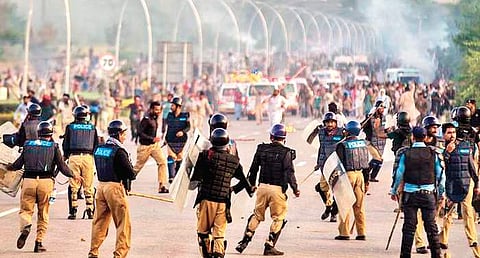

Benazir Bhutto had once referred to Pakistan as a ‘haven, the very petri-dish of international terrorism’. She may have been exaggerating somewhat—her attempt was to criticise the military government of the country—but she was not far wrong. The CIA World Factbook page on Pakistan, for instance, lists 10 major terrorist organisations that are based in the country, and a further four which, while outlawed in Pakistan itself, thrive abroad and also operate within Pakistan. The latest edition of the ‘Global Terrorism Index’ lists the country among the top five most affected by terrorism (Pakistan has figured in the top five in all editions of the Index since 2012, when it was first published).
Internationally, just about everybody equates Pakistan with terrorism. But what do Pakistanis themselves feel? How do they perceive terrorist organisations and their goals? What factors lead to extremism?
What are the effects on terrorism (and its perception) of education, religion, and the state?
Madiha Afzal attempts to answer all of these questions, and more, in Pakistan Under Siege: Extremism, Society and the State. Using surveys from various sources (most importantly, the Pew Research Center’s surveys) as well as her own research, Afzal presents data to examine various dimensions and aspects of Pakistan: its state, its connection with religion; its media and political narratives.
She supports and explains these further with discussions on Pakistan’s history, its cultural and ethnic makeup, its political policies, and more. Examples—quotations from students, from school teachers, from people whom she interviewed—help take the book to a more personal level.
The result is an eye-opener. Much of the history and some of the more horrifying truths about Pakistan—the discriminatory blasphemy laws, for instance, or the shooting of Malala Yousafzai—may be familiar to most, but what Afzal sheds light on, too, are the lesser known facts. How the state controls and manipulates school curricula to present a skewed image of Pakistan vis-a-vis the world. How education, until university level, largely focuses on learning by rote. How terrorist organisations have won over the youth, and continue to do so.
Afzal presents a startling, unnerving picture of a nation where liberal thought (and more, liberal voice) is increasingly in danger of being muffled. A nation where state, military, media, education, and religion are all part of a closely monitored, vicious behemoth that will brook no opposition.
For Indian readers, in particular, this is an interesting book because it shows us the inner workings of a nation which is (paradoxically, perhaps) closest to us in terms of culture, and yet our greatest enemy—if you were to buy into propaganda, that is. Pakistan Under Siege also brings home (though possibly unintentionally) the fact that an India veering towards a Hindu rashtra is closer to an ‘Islamic state’ Pakistan than it could possibly imagine.The radicalism, the intolerance, the whipping up of anti-‘neighbouring nation’ frenzy: these sound all too familiar.